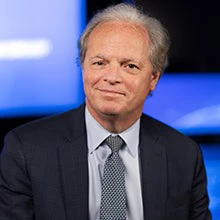
We all know from the headlines that many countries that traditionally give aid are today facing serious fiscal challenges at home. Last year, major donors’ aid to developing countries fell by nearly 3%, the OECD recently reported, breaking a long trend of annual increases. Tight budgets are also expected to put pressure on aid levels in the years ahead.
At the same time, despite the excellent news that the number of people living in absolute poverty declined from 1.9 billion in 1990 to 1.3 billion in 2008, a great many people—2.5 billion—still live on less than $2 a day.
The poorest will bear much of the brunt of climate-induced catastrophes such as drought and extreme weather events. In addition, none of the poorest countries afflicted by conflict or considered “fragile” are expected to meet any of the Millennium Development Goals (MDGs) by 2015. It’s not only these countries that are affected by issues that know no boundaries; everyone is affected.
Development aid has evolved into a very complex business, rife with overlapping and sometimes competing interests, driven by institutional mandates. This makes it all the more important that the global community reexamines how we’re giving aid—to whom and by whom—to make sure we’re getting the best value for money in a limited fiscal environment.
The International Development Association (IDA), the World Bank’s fund for the poorest, is a proven entity when it comes to results. IDA is the branch of the Bank that provides zero-interest loans and grants for the poorest countries. IDA is truly multilateral, making it unique among development entities, and has a history of evolving to ensure that its design stays current and effective.
As a global leader in transparency (ranked first out of 58 donors in the 2011 “Publish What You Fund” transparency index), IDA demonstrates that it uses money “smarter” than most bilateral funds, extracting far more value for money, according to the Center for Global Development. A recent multilateral aid review by DFID also cited IDA’s ability to deliver results and its “enormous cultural shift” in transparency.
We used these Spring Meetings to brainstorm with our IDA deputy community ways to make IDA even more effective, to leverage additional funds, and to keep adapting to the changing demands of our world.
We’ve also been stepping up our engagement with donors as a whole to take a hard look at portfolios and priorities, and have begun a series of dialogues with emerging market countries to harness their knowledge and experience in lifting people out of poverty potential. This dialogue is evolving quickly and offers huge potential for mutual learning. I am heartened by this broader cooperation wherein traditional and emerging donors are building on each other’s strengths.
We know what’s at stake and aren’t waiting. The year 2015 is approaching quickly and there is still hope for moving closer to the MDGs. I know that together, we can get aid to where it’s needed most.
______________
Related
- Website: IDA, the World Bank’s Fund for the Poorest
- “Finance for Development: Trends and Opportunities in a Changing Landscape"— Working Paper | Brief
- Website: Corporate Scorecard
- Website: AidFlows


Join the Conversation